The Gift of South Dakota
Subscriptions to South Dakota Magazine make great gifts!
Subscribe today — 1 year (6 issues) is just $29!
Dancing with Grebes
 |
| Western grebes appear to walk on water during the rush, perhaps the most distinctive element of their spring mating ritual. |
My love affair with grebes began when I was a high school biology teacher. During a lesson about birds, I showed my class a movie by Sir David Attenborough, the British broadcaster and wildlife biologist. I was amazed by the beauty and gracefulness of the grebes, with their long slender necks and pointed bills. Their courtship ritual was intricate and complex, unlike any other in the animal kingdom. They repeated each other’s every movement. If there were ever birds that demonstrated love, these grebes put the stereotypical doves to shame.
There are two displays, each including a specific set of steps performed with precision. The first is the rushing ceremony, which begins with advertising as the birds deliver a rolling call. Then comes ratchet-pointing, where they lower themselves into the water and their call becomes more ratchet-like. The next component is dip-shaking, which accurately describes the behavior of dipping their heads underwater and then shaking them from side to side after they resurface. Finally comes the rush, when the grebes run side by side across the surface of the water, necks back and wings up. They are the largest vertebrates on Earth with the ability to walk on water, covering up to 66 feet in 7 seconds through a combination of speed (20 steps per second), splayed feet to help gain traction and an unusual stride.
|
|
| The weed dance occurs during the mating season. Two grebes arch their backs, stretch their necks and share weeds that they will use to build a nest. |
The second display is the weed ceremony. It is equally complex and happens later in the mating season. But it was the rushing that fascinated me. As a part-time wildlife photographer, when I saw the ritual culminate into this beautiful dance across the water, I told myself that someday I would find grebes in the spring and photograph them.
When I retired from teaching, I started going down my bucket list of things I wanted to photograph. Western grebes were high on the list. They do not live in my state of Missouri, so I followed the Central Flyway, a major migration route over the Great Plains that encompasses a large part of the Prairie Pothole Region. Spring rains fill the potholes and they become a stopping point and breeding ground for many species of migratory waterfowl. Ducks, geese, pelicans and grebes take advantage of these pools, which contain a myriad of invertebrates, small fish and aquatic plants for food sources and nesting materials.
I knew about the potholes in South Dakota. Photographers look at each other’s work, and I’m sure I saw a picture of grebes taken in South Dakota. So about six years ago I made my first trip.
I’ll never forget my very first experience. The water was out, like it is in the spring. I had parked and was using a beanbag on the door of my truck. The grebes were coming really close, and that’s when I got my first good pictures. I didn’t get to see any rushing that day, but I went back later and witnessed babies riding on their mothers’ backs. I was hooked.
They usually start in April. I watch for the courtship ritual, which continues throughout the summer. But I keep looking because I’m waiting for the babies, too.
Of the 22 species of grebes, six can be found in South Dakota: Clark’s, western, pied-billed, eared, horned and red-necked. Clark’s grebe is similar to the western grebe; sometimes they are found mingling together. The other species are not as large. The breeding plumage of the pied-billed grebe is not as flamboyant. Its bill is not sharp and pointed and its neck is not long and graceful. The horned grebe has some interesting colors, with gold feathers wrapping around its head and a reddish ring around its neck. The eared grebe is arguably the most stunning of the smaller grebes. It has a golden fan of feathers radiating outward behind its eyes. I love grebes in general, but I think the western grebes are the most graceful and the most beautiful.
Photographers don’t always share their favorite spots, especially when you’re talking about birds. If you let it out where you’re going, then all of a sudden you get a crowd of people, and the birds are gone. I have traveled to South Dakota every spring for six years and have observed five of the six grebes during their migration and/or breeding season. (I have not been able to photograph or view a red-necked grebe yet.) Between the rushing and watching the babies, grebes have so much to offer. For a photographer, they are a dream come true.
Donna Caplinger lives in Fair Play, Missouri.
Editor’s Note: This story is revised from the March/April 2024 issue of South Dakota Magazine. To order or to subscribe, call (800) 456-5117.


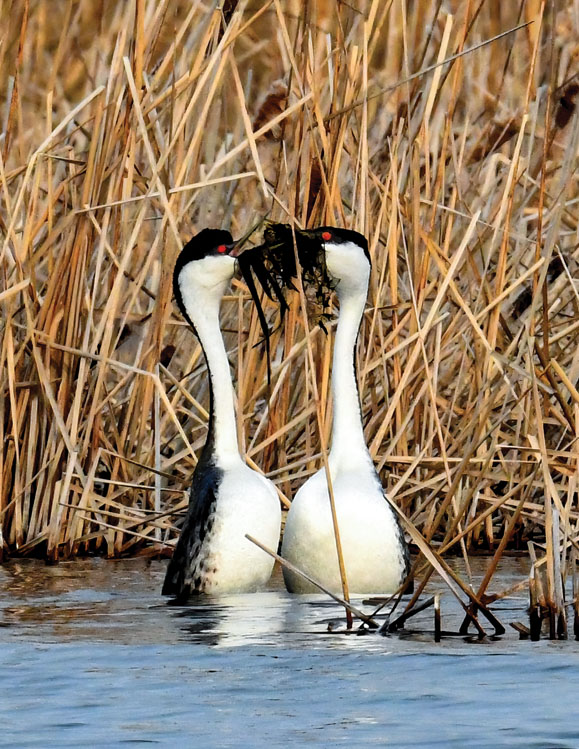
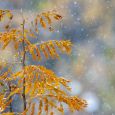
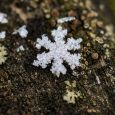

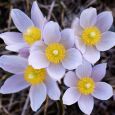
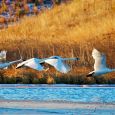
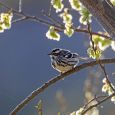


Comments